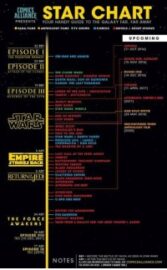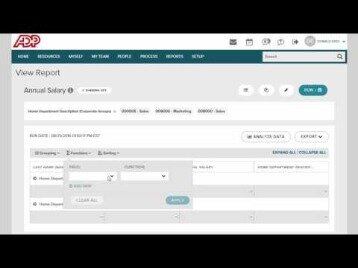
The term depreciation, in accounting, relates to the allocation of a fixed asset’s cost over its life. In other words, it is an accounting method used to divide an asset’s cost over its useful life or life expectancy. Through this process, companies can reduce their value in the same year as they generate revenues. Depreciation also represents the total reduction in the value of a fixed asset. When a company acquires a fixed asset, it cannot charge the total amount to the income statement.
What Is Depreciation? Definition, Types, How to Calculate – NerdWallet
What Is Depreciation? Definition, Types, How to Calculate.
Posted: Fri, 16 Jun 2023 07:00:00 GMT [source]
This results in depreciation being the highest in the first year of ownership and declining over time. To calculate the depreciation expense of subsequent periods, we need to apply the depreciation rate to the laptop’s carrying value at the start of each accounting period of its life. To calculate the depreciation expense for the first year, we need to apply the rate of depreciation (50%) to the cost of the asset ($2000) and multiply the answer with the time factor (3/12). Charges calculated with this method continue to decline as the double depreciation rate and depreciation base continue to decrease. At the end of the depreciation period, the balance of the book value is reduced to the asset’s salvage value.
The double declining balance formula
Under the DDB method, we don’t consider the salvage value in computing annual depreciation charges. Instead, we simply keep deducting depreciation until we reach the salvage value. The double declining balance (DDB) depreciation method is an approach to accounting that involves depreciating certain assets at twice the rate outlined under straight-line depreciation.
- Over time, as maintenance becomes more regular, you will write off less of the value of the asset while writing off more in maintenance.
- Another thing to remember while calculating the depreciation expense for the first year is the time factor.
- In the step chart above, we can see the huge step from the first point to the second point because depreciation expense in the first year is high.
- Now the double declining balance depreciation rate is calculated by doubling the straight-line rate.
- Download this accounting example in excel to help calculate your own Double Declining Depreciation problems.
- Double declining balance is useful for assets, such as vehicles, where there is a greater loss in value upfront.
For example, a company’s fixed assets may contain land, building, vehicles, computers, etc. FitBuilders estimates that the residual or salvage value at the end of the fixed asset’s life is $1,250. Since we already have an ending book value, let’s squeeze in the 2026 depreciation expense by deducting $1,250 from $1,620. Accelerated depreciation techniques charge a higher amount of depreciation in the earlier years of an asset’s life. One way of accelerating the depreciation expense is the double decline depreciation method. While you don’t calculate salvage value up front when calculating the double declining depreciation rate, you will need to know what it is, since assets are depreciated until they reach their salvage value.
Instead of multiplying by our fixed rate, we’ll link the end-of-period balance in Year 5 to our salvage value assumption. However, the management teams of public companies tend to be short-term oriented due to the requirement to report quarterly earnings (10-Q) and uphold their company’s share price. In addition, capital expenditures (Capex) consist of not only the new purchase of equipment but also the maintenance of the equipment.
What is the double declining balance (DDB) depreciation method?
If the beginning book value is equal (or almost equal) with the salvage value, don’t apply the DDB rate. Instead, compute the difference between the beginning book value and salvage value to compute the depreciation expense. For example, assume your business purchases a delivery vehicle for $25,000.
Based on its calculations, the company calculates the assets to have a salvage value of $0. Therefore, the depreciation charge for the vehicle in the first year will be as follows. The depreciation process for an asset begins when a company puts an asset into use. how much should i charge for bookkeeping services averages & more However, it must meet the accounting definition set for the term asset. Therefore, it must generate economic benefits and provide returns for the depreciation to apply. If an asset does not meet the above definition, companies cannot charge depreciation for it.
However, companies can use this method for assets that deter significantly at the start. The double declining balance depreciation method shifts a company’s tax liability to later years when the bulk of the depreciation has been written off. The company will have less depreciation expense, resulting in a higher net income, and higher taxes paid. This method accelerates straight-line method by doubling the straight-line rate per year.
Free Double Declining Balance Depreciation Template
More particularly, the matching principle in accounting requires companies to charge expenses in the year to which they relate. However, fixed assets do not constitute an expenditure for a specific period. Bottom line—calculating depreciation with the double declining balance method is more complicated than using straight line depreciation.
It is frequently used to depreciate fixed assets more heavily in the early years, which allows the company to defer income taxes to later years. The double-declining method (DDB) of depreciation is a technique that companies use to charge depreciation. This method is also known as the reducing balance method, which companies use to account for a fixed asset’s value. The double-declining balance depreciation method uses accelerated depreciation that charges a higher expense initially.
Double-Declining Balance (DDB) Depreciation Method Definition With Formula
It is calculated by subtracting the fixture’s cost of $100,000 from its accumulated depreciation of $36,000 ($20,000 + $16,000). Based on the book value of $64,000 multiplied by 20%, the depreciation expense for Year 3 is $12,800. Although some accounting software applications can manage fixed assets and depreciation, you will likely have to manually enter a depreciation journal entry into your software application.
According to the straight-line method, an asset’s annual depreciation will be 10% of the asset’s cost over a 10-year period. The straight-line rate of 10% is doubled to 20% under the double-declining balance method. Instead of multiplying the fixture’s original cost by 20%, the 20% is multiplied by the fixture’s book value at the beginning of the year.
Depreciation in the year of disposal if the asset is sold before its final year of useful life is therefore equal to Carrying Value × Depreciation% × Time Factor. No depreciation is charged following the year in which the asset is sold. In the accounting period in which an asset is acquired, the depreciation expense calculation needs to account for the fact that the asset has been available only for a part of the period (partial year). Another thing to remember while calculating the depreciation expense for the first year is the time factor.
Due to the accelerated depreciation expense, a company’s profits don’t represent the actual results because the depreciation has lowered its net income. If the company was using the straight-line depreciation method, the annual depreciation recorded would remain fixed at $4 million each period. As mentioned, there are several methods under which companies charge depreciation to their accounts. Each technique involves a specific calculation and can result in a different reduction. However, none of these methods provides an accurate estimate of the asset’s usage. Despite that, companies must judge which technique produces the most accurate results based on their estimation.
On the whole, DDB is not a generally easy depreciation method to implement. We can understand how the depreciation expense is calculated yearly under the double-declining method from the schedule below. For example, last year, the actual depreciation expense, as per the depreciation rate, should have been $13,422 but kept at $12,108.86 to keep the asset at its estimated salvage value.

Some companies use accelerated depreciation methods to defer their tax obligations into future years. It was first enacted and authorized under the Internal Revenue Code in 1954, and it was a major change from existing policy. The declining balance method is one of the two accelerated depreciation methods and it uses a depreciation rate that is some multiple of the straight-line method rate. The double-declining balance (DDB) method is a type of declining balance method that instead uses double the normal depreciation rate. With the double declining balance method, you depreciate less and less of an asset’s value over time. That means you get the biggest tax write-offs in the years right after you’ve purchased vehicles, equipment, tools, real estate, or anything else your business needs to run.
Microsoft® Excel® Functions Equivalent: DDB
In that year, the amount to be depreciated will be the difference between the book value of the asset at the beginning of the year and its final salvage value (this is usually just a small remainder). Double-declining depreciation charges lesser depreciation in the later years of an asset’s life. We can incorporate this adjustment using the time factor, which is the number of months the asset is available in an accounting period divided by 12. The following section explains the step-by-step process for calculating the depreciation expense in the first year, mid-years, and the asset’s final year. Public companies are required to record expenses together with income earned from those expenses. For example, when a company purchases an expensive asset that it will use for several years, it does not deduct the entire purchase price at once as a business expense.

The theory is that certain assets experience most of their usage, and lose most of their value, shortly after being acquired rather than evenly over a longer period of time. Mary Girsch-Bock is the expert on accounting software and payroll software for The Ascent. If you’re using the wrong credit or debit card, it could be costing you serious money. Our experts love this top pick, which features a 0% intro APR for 15 months, an insane cash back rate of up to 5%, and all somehow for no annual fee. Even though year five’s total depreciation should have been $5,184, only $4,960 could be depreciated before reaching the salvage value of the asset, which is $8,000.

